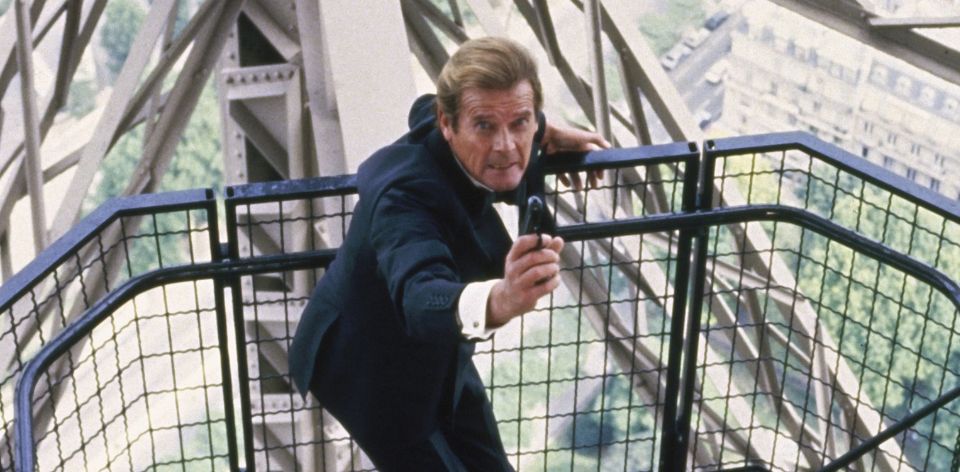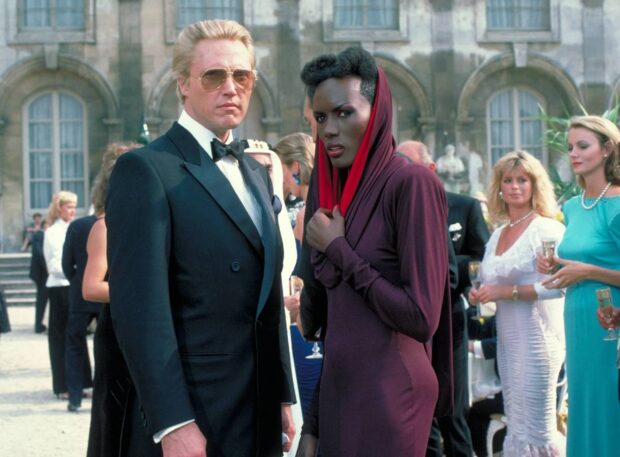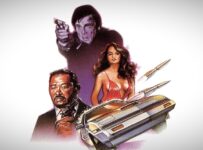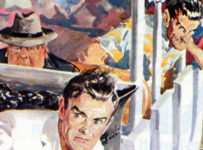The year is 1985. The sun is setting on the Roger Moore era of the James Bond franchise—though daylight savings seems to have pushed that dusk back a few more years.
After a cold open that sees Bond snowboarding to The Beach Boys’ “California Girls,” there’s little hope of this ever settling into a grounded tone. But once the killer, if lyrically nonsensical, Duran Duran theme kicks in, and Grace Jones makes her first electric appearance, it’s clear that A View to a Kill is going to be a memorable ride.
The film takes its title from a short story by Ian Fleming, published in the For Your Eyes Only collection in 1960. Originally titled From a View to a Kill, that brief tale sees Bond disguised as a dispatch rider while investigating the death of a messenger in France.
Yet the 1985 film bears little resemblance to its namesake. In director John Glen’s third Bond film, written by Richard Maibaum and Michael G. Wilson, Bond (Roger Moore, in his seventh and final outing) is sent to recover a microchip from the body of 003 in Siberia. Realising its potential for espionage, Bond is led to Max Zorin (Christopher Walken), the head of hardware manufacturer Zorin Industries. When he discovers Zorin’s plan to trigger a massive earthquake and wipe out Silicon Valley’s competition, Bond must get past bodyguard May Day (Grace Jones), whose allegiance to Zorin shifts after she meets 007.
Wholly a product of its time, the earnestly film leans into the 1980s: fire trucks, snowboards, Eiffel Tower stunts, the latest technology (personal computers!), and a machine-gun-wielding Walken (a role reportedly offered to both David Bowie and Sting). If Moore began his tenure with the funky blaxploitation energy of Live and Let Die, he ended it with the glittery, synth-driven shoulder pads of the High ’80s.
May Day is arguably one of the most fascinating characters in Bond history, not least because of the casting of the incomparable Jones. Neither outright villain nor traditional henchwoman, and certainly no Bond girl in the usual sense (that role is left to Tanya Roberts), May Day subverts the formula entirely: physically dominant, compelling, and more interesting than Walken’s Zorin. Off camera, Jones famously anticipated Moore’s notorious on-set pranks by donning a black and white strap-on dildo during their love scene.
Yet there’s no escaping the simple fact that Moore, 58 at the time, was getting a little long in the tooth to play the suave secret agent. He was, on average, 25 to 30 years older than his romantic leads, and by the mid-80s, the cinematic landscape had shifted. Few gaps feel wider than the one between 1973, when Moore first took up the mantle, and the mid-1980s. By then, the blockbuster model had shifted, and entries like Moonraker were reacting to trends rather than setting them.
The next decade and a half would demand a new kind of Bond for a new kind of audience. A new era was dawning, one that would conclusively lay the Moore era to rest. And while his seven films are often mocked for being over-the-top, pun-laden, and downright silly, Moore nevertheless carved out a definitive version of the character, one distinct from Fleming’s, and endlessly entertaining in its own right. He may not have been the most convincing spy, but he was a movie star through and through—and he gave us some of the series’ most iconic lines.
James Bond would return… in The Living Daylights.






